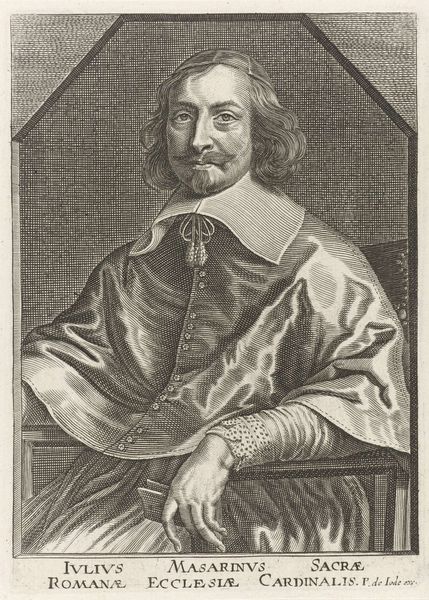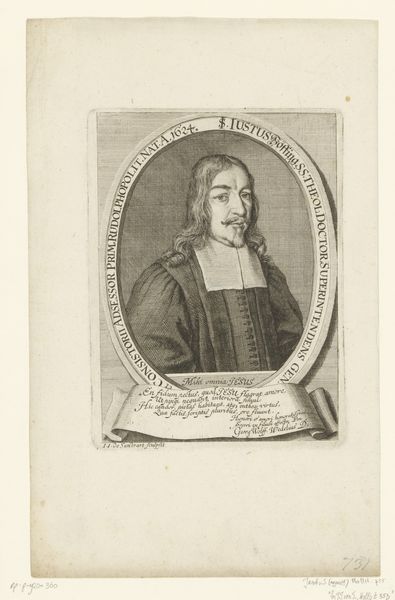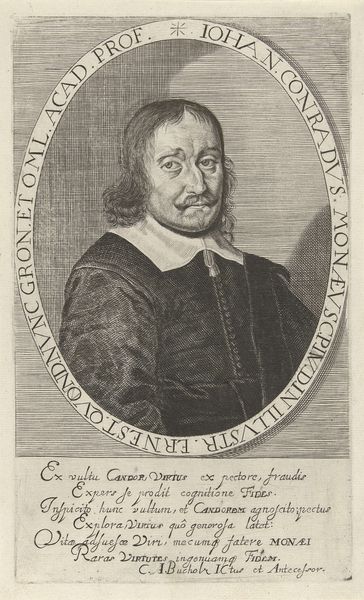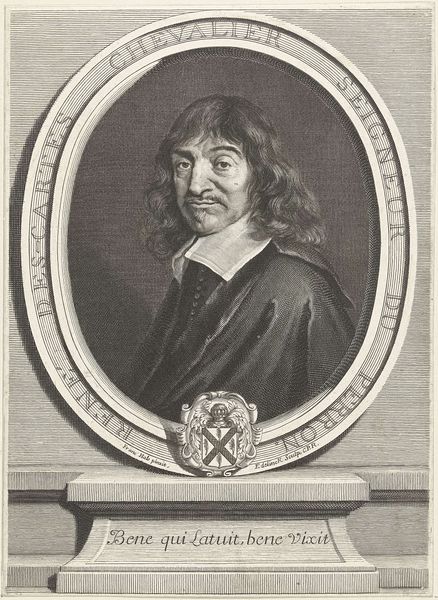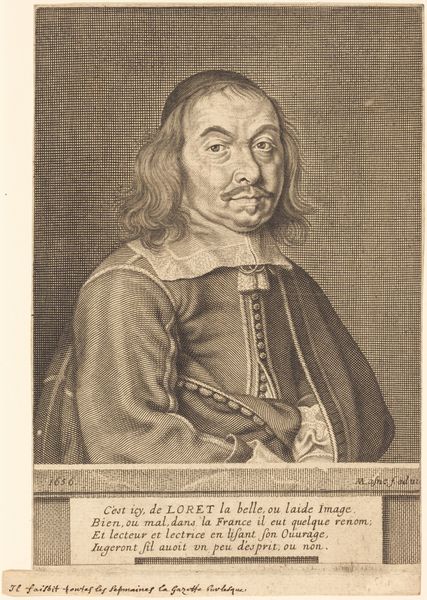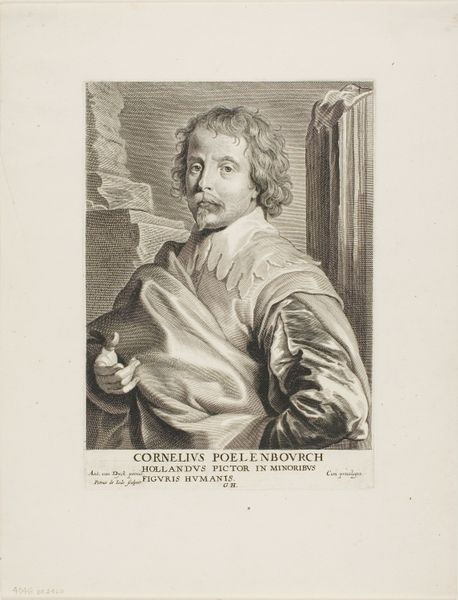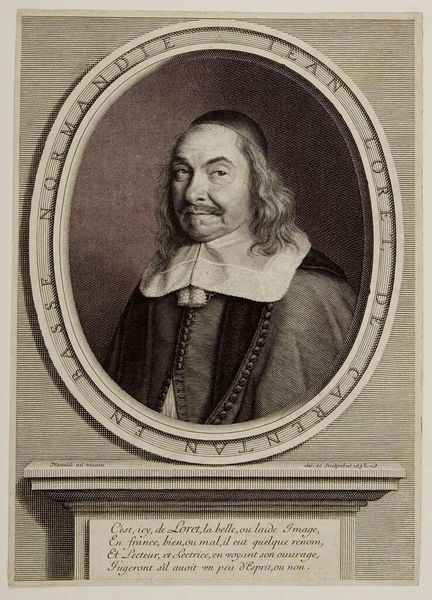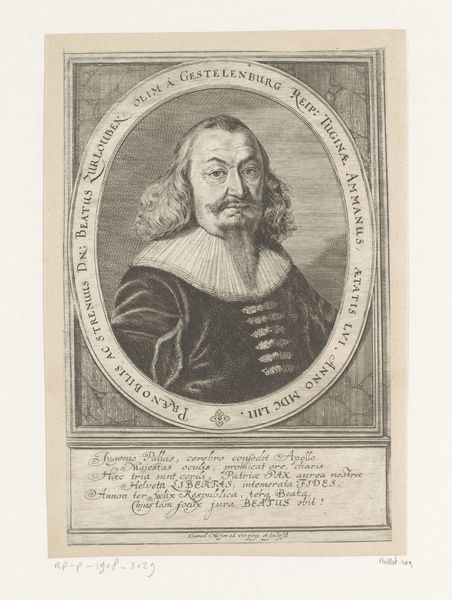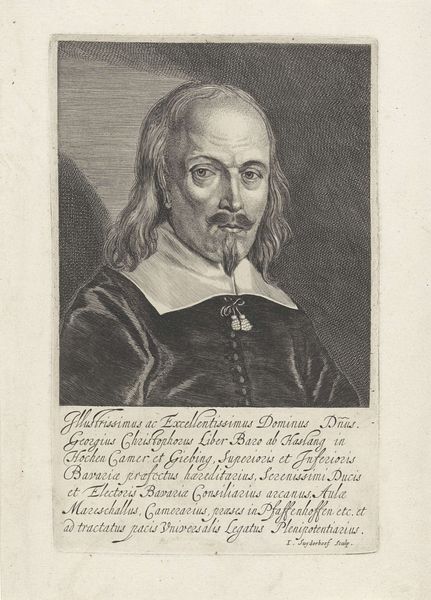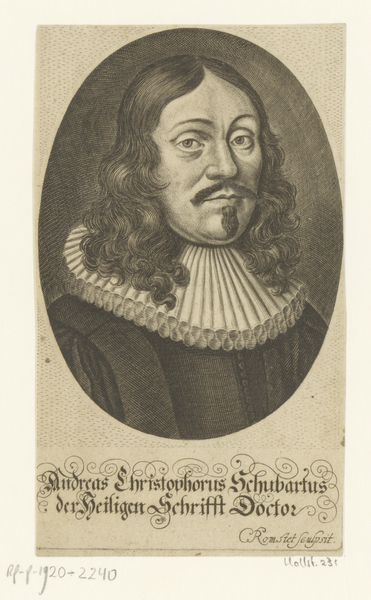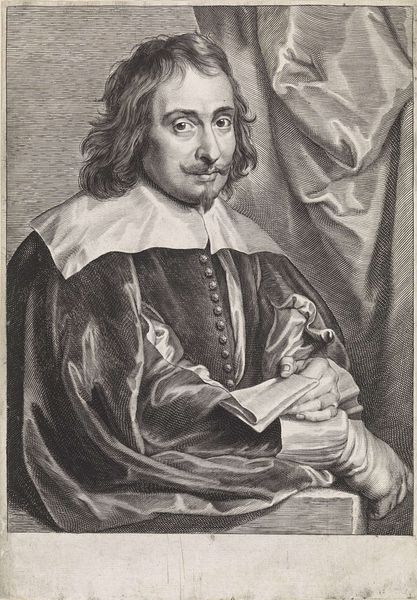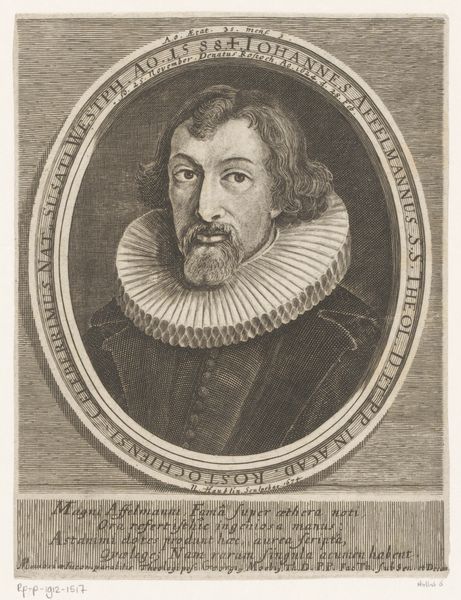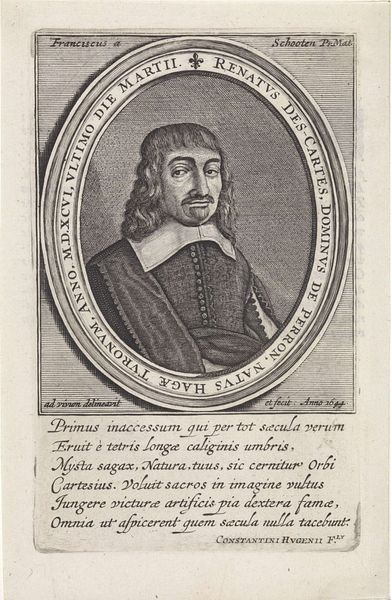
print, engraving
#
portrait
#
baroque
#
dutch-golden-age
# print
#
old engraving style
#
portrait reference
#
history-painting
#
engraving
Dimensions: height 267 mm, width 204 mm
Copyright: Rijks Museum: Open Domain
Curator: Here we have Lucas Vorsterman I's "Portret van Constantijn Huygens (I)," a print dating somewhere between 1630 and 1674, here on display at the Rijksmuseum. Editor: My first thought is somber elegance. The stark contrast achieved through engraving gives it a powerful, almost melancholic feel. The rendering of textures, particularly in the velvet robe and lace collar, is astonishing given the medium. Curator: Indeed. Engraving like this, requiring precise labor with metal tools to incise the image onto a copper plate, then repeatedly inking and printing, speaks to a whole system of production. It emphasizes craft in reproducing and disseminating images to wider audiences. How does that interplay with the portrayal of wealth through costume? Editor: Absolutely. That velvet isn't just aesthetically pleasing; it shouts wealth, privilege, and power. We should remember Constantijn Huygens was an important figure – poet, composer, and secretary to two Princes of Orange. The image and medium work together to reinforce and circulate a message of elite status in Dutch society. It creates lasting, reproducible forms of fame. The paper itself allows to make as many iterations and thus allowing to circulate easier. Curator: Notice too the inscription at the bottom. How text combines with the visual imagery to amplify Huygens’ standing, presenting him as a man whose fame will spread across the earth. The visual language of portraiture in itself elevates individuals, transforming them into emblems of social values and continuity. It's the visual and textual commemoration of status, really. The serious eyes also show confidence and wit. Editor: So, more than a simple record of a face, it's an intricate construction of social importance through material, technique, and symbolic language. Curator: Precisely. A carefully manufactured icon of reputation, circulated in print, reaching far beyond a single painted likeness. Editor: Examining Vorsterman’s piece through the lens of material practices alongside iconography has truly deepened my appreciation of its historical meaning. Curator: Mine as well. It is fascinating to consider how Vorsterman and Huygens are both participating in an established form of Dutch visual tradition, imbuing it with cultural resonance.
Comments
No comments
Be the first to comment and join the conversation on the ultimate creative platform.
